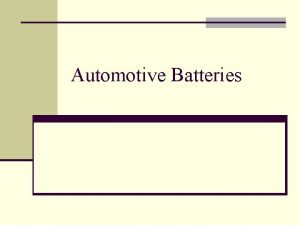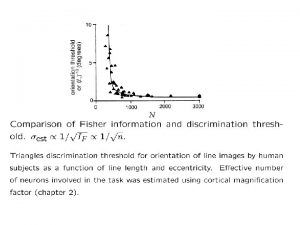Modern means of transport Train Automotive School Gdask




![Pendolino (from Italian pendolo [ˈpɛndolo] "pendulum", and -ino, a diminutive suffix) is an Italian Pendolino (from Italian pendolo [ˈpɛndolo] "pendulum", and -ino, a diminutive suffix) is an Italian](https://slidetodoc.com/presentation_image_h/ed417e2581caf4349b7b35c2cb502ace/image-5.jpg)






- Slides: 11

Modern means of transport Train Automotive School Gdańsk, Poland Migration in the past, the present and the future - problems and opportunities LLP Comenius, 2012 -2014

Selected Contemporary fast trains in Europe Siemens Velaro Newag Impuls TGV Pendolino Migration in the past, the present and the future - problems and opportunities LLP Comenius, 2012 -2014

TGV - Train a Grande Vitesse -high-speed train. The maximum permissible speed: 300 and 320 km/h. TGV set the record for the fastest wheeled train, reaching 574. 8 km/h (357. 2 mph) on 3 April 2007 Exemplary TGV train TGV POS - In service: 2006 - Maximum speed is 380 km/h but TGV Duplex wagons set a record with unit V 150 - 574. 8 km/h - The maximum permissible speed: 320 km/h - Train length: 237, 59 m - Station in Paris where you can see the TGV POS: Gare de l'Est Migration in the past, the present and the future - problems and opportunities LLP Comenius, 2012 -2014

Siemens Velaro –Siemens Velaro is a family of high-speed EMU trains used in Germany, Spain, China and Russia. The Velaro is based on the ICE 3 M/F high-speed trains manufactured by Siemens for Deutsche Bahn. In July 2006 a Siemens Velaro train-set (AVE S-103) reached 403. 7 km/h (250. 8 mph). At that time, that was the world record for railed and unmodified commercial service train sets. Exemplary Velaro train Siemens Velaro AVE Class 103 - In service: 2006 - The maximum permissible speed: 350 km/h Migration in the past, the present and the future - problems and opportunities LLP Comenius, 2012 -2014
![Pendolino from Italian pendolo ˈpɛndolo pendulum and ino a diminutive suffix is an Italian Pendolino (from Italian pendolo [ˈpɛndolo] "pendulum", and -ino, a diminutive suffix) is an Italian](https://slidetodoc.com/presentation_image_h/ed417e2581caf4349b7b35c2cb502ace/image-5.jpg)
Pendolino (from Italian pendolo [ˈpɛndolo] "pendulum", and -ino, a diminutive suffix) is an Italian family of tilting trains used in Italy, Spain, Portugal, Slovenia, Finland, Russian Federation, the Czech Republic, the United Kingdom, Slovakia, Switzerland, China and shortly in Romania and Poland. Exemplary Pendolino train Pendolino ETR 610 - The maximum permissible speed: 250 km/h - Train length: 187, 4 m - Tilting train - A tilting train is a train that has a mechanism that enables it to increase speed on regular railway tracks. In a curve to the left, the train tilts to the left to compensate for the g-force push to the right, and vice versa. The train may be constructed in such a way that inertial forces cause the tilting (passive tilt), or it may have a computercontrolled power mechanism (active tilt). Migration in the past, the present and the future - problems and opportunities LLP Comenius, 2012 -2014

Newag Impuls - The family of standard electric multiple units manufactured by Newag from Nowy Sącz in several versions, which differ in the number of units and their purpose. The family consists of models 31 WE, 35 WE, 36 WE and 37 WE. Maximum speed is 211. 6 km / h reached by the model 31 WE during the last attempt to test Central Main Line at the night of 18 of February, 2013 Exemplary Impuls train Newag Impuls 35 WE - In service: 2012 - The maximum permissible speed: 160 km/h - Train length: 113, 6 m Migration in the past, the present and the future - problems and opportunities LLP Comenius, 2012 -2014

The theoretical journey time by train from Gdansk to Paris in a straight line. - The distance on the map between Gdansk and Paris in a straight line: 1218, 68 km The maximum permissible speed The theoretical journey time TGV POS Siemens Velaro AVE Class 103 Pendolino ETR 610 Newag Impuls 35 WE 320 km/h 350 km/h 250 km/h 160 km/h 3 h 49’ 3 h 29’ 4 h 52’ Migration in the past, the present and the future - problems and opportunities LLP Comenius, 2012 -2014 7 h 37’

The theoretical journey time by train from Gdansk to Berlin in a straight line. - The distance on the map between Gdansk and Berlin in a straight line: 396, 03 km The maximum permissible speed The theoretical journey time TGV POS Siemens Velaro AVE Class 103 Pendolino ETR 610 Newag Impuls 35 WE 320 km/h 350 km/h 250 km/h 160 km/h 1 h 14’ 1 h 08’ 1 h 35’ Migration in the past, the present and the future - problems and opportunities LLP Comenius, 2012 -2014 2 h 28’

The theoretical journey time by train from Gdansk to Rome in a straight line. - The distance on the map between Gdansk and Rome in a straight line: 1442, 23 km The maximum permissible speed The theoretical journey time TGV POS Siemens Velaro AVE Class 103 Pendolino ETR 610 Newag Impuls 35 WE 320 km/h 350 km/h 250 km/h 160 km/h 4 h 31’ 4 h 07’ 5 h 46’ Migration in the past, the present and the future - problems and opportunities LLP Comenius, 2012 -2014 9 h

The theoretical journey time by train from Gdansk to Tallinn in a straight line. - The distance on the map between Gdansk and Tallinn in a straight line: 690, 24 km The maximum permissible speed The theoretical journey time TGV POS Siemens Velaro AVE Class 103 Pendolino ETR 610 Newag Impuls 35 WE 320 km/h 350 km/h 250 km/h 160 km/h 2 h 10’ 1 h 58’ 2 h 46’ Migration in the past, the present and the future - problems and opportunities LLP Comenius, 2012 -2014 4 h 19’

The theoretical journey time by train from Gdansk to Ankara in a straight line. - The distance on the map between Gdansk and Ankara in a straight line: 1851, 72 km The maximum permissible speed The theoretical journey time TGV POS Siemens Velaro AVE Class 103 Pendolino ETR 610 Newag Impuls 35 WE 320 km/h 350 km/h 250 km/h 160 km/h 5 h 47’ 5 h 18’ 7 h 25’ 11 h 34’ Migration in the past, the present and the future - problems and opportunities LLP Comenius, 2012 -2014
 My favourite means of transport is train
My favourite means of transport is train Modern means of transport
Modern means of transport Modern automotive technology answer key
Modern automotive technology answer key Sodium potasium pump
Sodium potasium pump Primary active transport and secondary active transport
Primary active transport and secondary active transport Now answer the following questions
Now answer the following questions Active vs passive transport venn diagram
Active vs passive transport venn diagram Unlike passive transport, active transport requires
Unlike passive transport, active transport requires Primary active transport vs secondary active transport
Primary active transport vs secondary active transport Bioflix activity membrane transport active transport
Bioflix activity membrane transport active transport Active and passive transport
Active and passive transport Bioflix membrane transport
Bioflix membrane transport





















